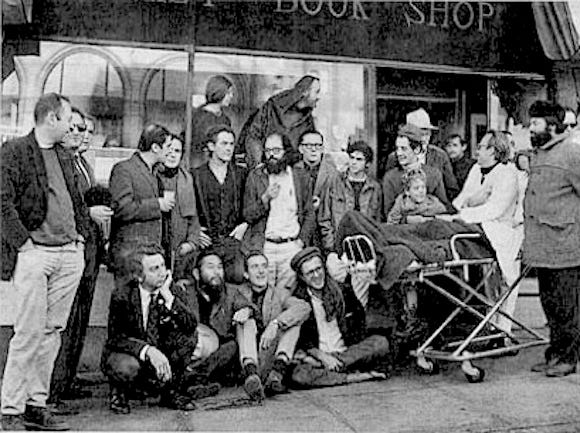The San Francisco Renaissance
The San Francisco Renaissance was a cultural and literary movement that emerged in the 1950s, centered around San Francisco, California.
This movement was characterized by a significant explosion of creative activity in poetry, literature, and the arts, and it played a foundational role in setting the stage for the Beat Generation and, subsequently, the hippie movement of the 1960s.
Origins and Key Figures
The San Francisco Renaissance is often traced back to the arrival of poet Kenneth Rexroth in San Francisco in the 1930s, who became a central figure and mentor within the movement. The movement gained momentum in the post-World War II era, particularly with the poetry readings at the Six Gallery in October 1955, which featured emerging Beat poets such as Allen Ginsberg, Michael McClure, Philip Whalen, Gary Snyder, and Philip Lamantia. Jack Kerouac was also present, and though he didn't read, his support and participation symbolized the interconnectedness of the Beat Generation with the San Francisco Renaissance.
Characteristics
The movement was marked by its rejection of mainstream American values, which the participants found to be overly materialistic and conformist. Instead, they sought personal and collective transformation through art, spirituality (including interest in Eastern philosophies), and an exploration of human consciousness. This period saw a flourishing of experimental poetry and literature, with an emphasis on spontaneity, open forms, and the incorporation of jazz influences.
Influence on Hippy Culture
The San Francisco Renaissance significantly influenced the development of hippie culture in several ways:
1. Countercultural Foundation: The movement laid the groundwork for the counterculture of the 1960s, with its emphasis on non-conformity, spiritual exploration, and social change. The poets and artists of the San Francisco Renaissance questioned mainstream values and explored alternative ways of living, which resonated with the hippie movement.
2. Communal Living and Social Experimentation: The communal experiences and social experiments of the San Francisco Renaissance figures anticipated the communal living situations and social structures that would become prevalent in hippie culture.
3. Environmentalism and Eastern Philosophies: The movement's interest in nature and Eastern philosophies, particularly Buddhism, influenced the hippie movement's embrace of environmentalism and its incorporation of Eastern spiritual practices.
4. Artistic and Musical Influence: The artistic experimentation and fusion of different cultural influences seen in the San Francisco Renaissance helped shape the psychedelic art and music that became synonymous with hippie culture. The movement's celebration of creativity and artistic freedom inspired the visually vibrant and musically eclectic nature of the 1960s counterculture.
5. Epicenter of Cultural Revolution: San Francisco's status as a hub of artistic and literary activity during the Renaissance helped establish the city as the epicenter of the hippie movement, particularly with the Haight-Ashbury district becoming synonymous with the Summer of Love in 1967.
6. Legacy of Activism: The activism and political engagement of many figures within the San Francisco Renaissance, including their involvement in civil rights, anti-war protests, and free speech movements, laid the ideological groundwork for the hippie movement's own social and political activism.
Conclusion
The San Francisco Renaissance was more than just a literary movement; it was a catalyst for cultural and social change. Its influence on hippie culture is evident in the shared values of non-conformity, spiritual exploration, and a desire for a more just and meaningful society. By fostering an environment that celebrated creativity, individuality, and collective action, the San Francisco Renaissance helped pave the way for the hippie movement and the broader countercultural revolution of the 1960s.
